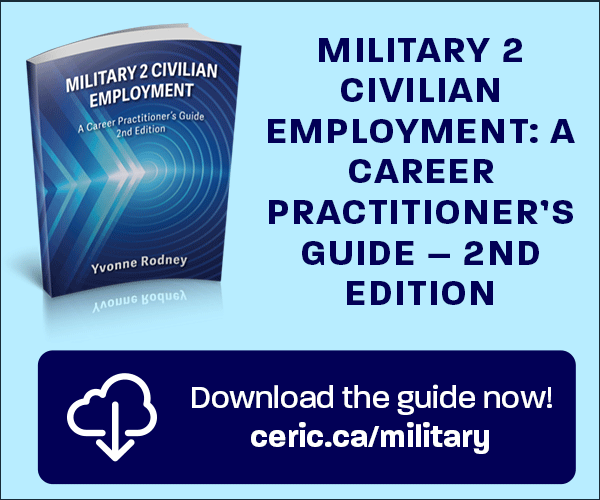The Role of Personality and Goal Orientation in Student Preferences for Job Attributes
Keywords:
personality, goal orientation, student, job attributes, careerAbstract
This study examined the relationships between personality, goal orientation, and the job preferences individuals have early in their careers. This information provides a better understanding of the contributors to individual job preferences early in one’s career allowing career counselors and placement centers to better advise individuals in job seeking, and also shows organizations how to target recruitment efforts to enhance applicant acceptance of job offers. Job preferences were divided into four categories, including Long-term Security, Financial Interests, Intrinsic and Personal Interests, and Prestige. A model was tested linking the dispositional variables to the job preferences among 158 participants. Results showed that some dispositional variables can indeed predict individual’s job preferences.
References
Amabile, T. M., Hill, K. G., Hennessey, B. A., & Tighe, E. M. (1994). The work preference inventory: Assessing intrinsic and extrinsic motivational orientations. Journal of Personality and Social Psychology, 66, 950-967.
Ashforth, B.E. (2001). Role transitions in organizational life: An identity based perspective. Mahwah, NJ: Erlbaum.
Berdie, R. F. (1944). Factors related to vocational interests. Psychological Bulletin, 41, 137-157.
Boudreau, J. W., Boswell, W. R., Judge, T. A., & Bretz, Jr., R. D. (2001). Personality and cognitive ability as predictors of job search among employed managers. Personnel Psychology, 54, 25-50.
Burke, R. J., & Deszca, E. (1982). Preferred organizational climates of Type A individuals. Journal of Vocational Behavior, 21, 50-59.
Button, S. B., Mathieu, J. E., & Zajac, D. M. (1996). Goal orientation in organizational research: A conceptual and empirical foundation. Organizational Behavior and Human Decision Processes, 67, 26-48.
Cable, D. M., & Graham, M. E. (2000). The determinants of job seekers’ reputation perceptions. Journal of Organizational Behavior, 21, 929- 947.
Cable, D. M., & Judge, T. A. (1994). Pay preferences and job search decisions: A person-organization fit perspective. Personnel Psychology, 47, 317-348.
Costa, P. T., & McCrae, R. R. (1991). Revised NEO personality inventory (NEO PI–R) and NEO five factor inventory (NEO–FFI): Professional Manual. Odessa, FL: Psychological Assessment Resources.
Darley, J. G., & Hagenah, T. (1955). Vocational interest measurement: Theory and practice. Minneapolis: Univ. of Minnesota Press.
Digman, J. M. (1990). Personality structure: Emergence of the five-factor model. Annual Review of Psychology, 41, 417-440.
Dweck, C. S. (1986). Motivational processes affecting learning. American Psychologist, 41, 1040-1048.
Dweck, C. S. (1989). Motivation. In A. Lesgold & R. Glaser (Eds.), Foundations for psychology of education (pp. 87-136). Hillsdale, NJ: Erlbaum.
Eison, J. A. (1979). The development and validation of a scale to assess different student orientations towards grades and learning. Unpublished doctoral dissertation, The University of Tennessee, Knoxville, TN.
Eison, J. A. (1981). A new instrument for assessing students’ orientations towards grades and learning. Psychological Reports, 48, 919-924.
Elliot, A. J., & Church, M. A. (1997). A hierarchical model of approach and avoidance achievement motivation. Journal of Personality and Social Psychology, 72, 218-232.
Fisher, C. D., Ilgen, D. R., & Hoyer, W. D. (1979). Source credibility, information favorability, and job offer acceptance. Academy of Management Journal, 22, 94-103.
Gati, I. (1986). Making career decisions – A sequential elimination approach. Journal of Counseling Psychology, 33, 408-417.
Gleuck, W. F. (1974). Decision-making: Organization choice. Personnel Psychology, 27, 77-93.
Graziano, W. G., Habashi, M. M., & Sheese, B. E. (2007). Agreeableness, empathy, and helping: A person × situation perspective. Journal of Personality and Social Psychology, 93,583-599.
Hansen, J. C. (1984). The measurement of vocational interests: Issues and future directions. In S. D. Brown & R. W. Lent (Eds.), Handbook of counseling psychology (pp. 99- 136). New York: Wiley.
Harris, M. M., & Fink, L. S. (1987). A field study of applicant reactions to employment opportunities: Does the recruiter make a difference? Personnel Psychology, 40, 765-784.
Holland, J. L. (1958). A personality inventory employing occupational titles. Journal of Applied Psychology, 42, 336-342.
Holland, J. L. (1997). Making vocational choices: A theory of vocational personalities and work environments (itd ed.). Odessa, FL: Psychological Assessment
Resources.
Holland, J. L. (1999). Why interest inventories are also personality inventories. In M. Savickas & A. Spokane (Eds.), Vocational interests: Their meaning, measurement,
and use in counseling (pp. 87-101). Palo Alto, CA: Davies-Black.
Ilgen, D.R. (1971). Satisfaction with performance as a function of the initial level of expected performance and the deviation from expectations. Organizational Behavior and Human Decision Processes, 6, 345-361.
Johnson, M. K. (2001). Job values in the young adult transition: Change and stability with age. Social Psychology Quarterly, 64, 297-317.
Judge, T. A., & Bretz, R. D. (1992). Effects of work values on job choice decisions. Journal of Applied Psychology, 77, 261-271.
Judge, T. A., & Cable, D. M. (1997). Applicant personality, organizational culture, and organization attraction. Personnel Psychology, 50, 359-394.
Kammeyer-Mueller, J.D., Wanberg, C.R., Glomb, T.M., & Ahlburg, D. (2005). The role of temporal shifts in turnover processes: It’s about time. Journal of Applied Psychology: 90, 644-658.
Larson, L. M., Rottinghaus, P. J., & Borgen, F. H. (2002). Meta-analyses of big six interests and big five personality factors. Journal of Vocational Behavior, 61, 217-239.
Mitchell, T. R., & Mickel, A. E. (1999). The meaning of money: An individual-difference perspective. Academy of Management Review, 24, 568-578.
Nicholls, J. G. (1984). Conceptions of ability and achievement motivation. In R. Ames and C. Ames (Eds.) Research on motivation in education: Student motivation (Vol. 1, pp. 39- 73). New York: Academic Press.
Neustadt, E., Chamorro-Premuzic, T., & Furnham, A. (2006). The relationship between personality traits, self-esteem, and attachment at work. Journal of Individual Differences, 27, 208-217.
Posner, B. Z. (1981). Comparing recruiter, student, and faculty perceptions of important applicant and job characteristics. Personnel Psychology, 34, 329-339. Powell, G. N. (1984). Effects of job attributes and recruiting practices on applicant decisions: A comparison. Personnel Psychology, 37, 721-732.
Rau, B. L., & Hyland, M. M. (2002). Role conflict and flexible work arrangements: The effects on applicant attraction. Personnel Psychology, 55, 111-136.
Rubinstein, C. R. (1981). Survey report on money. Psychology Today, 15(5), 29-44.
Rynes, S. L., & Lawler, J. (1983). A policy-capturing investigation of the role of expectancies in decisions to pursue job alternatives. Journal of Applied Psychology, 68, 620-631.
Saucier, G. (2002). Orthogonal markers for orthogonal factors: The case of the Big Five. Journal of Research in Personality, 36, 1–31.
Schein, E. H. (1985). Career anchors: Discovering your real values. San Diego, CA: University Associates.
Stevens, C. D., & Ash, R. A. (2001). Selecting employees for fit: Personality and preferred managerial style. Journal of Managerial Issues, 13, 500-517.
Taylor, M. S., & Bergmann, T. J. (1987). Organizational recruitment activities and applicants’ reactions at different stages of the recruitment process. Personnel Psychology, 40, 261-285.
Turban, D. B., & Keon, T. L. (1993). Organizational attractiveness: An interactionist perspective. Journal of Applied Psychology, 78, 184-193.
Turban, D. B., Eyring, A. R., & Campion, J. E. (1993). Job attributes: Preferences compared with reasons given for accepting and rejecting job offers. Journal of Occupational and Organizational Psychology, 66, 71-81.
VandeWalle, D. (1997). Development and validation of a work domain goal orientation instrument. Educational and Psychological Measurement, 57, 995-1015.
Wanous, J.P. (1977). Organizational entry: Newcomers moving from outside to inside. Psychological Bulletin, 84, 601-618.

Downloads
Published
How to Cite
Issue
Section
License

This work is licensed under a Creative Commons Attribution-NonCommercial-NoDerivatives 4.0 International License.
















